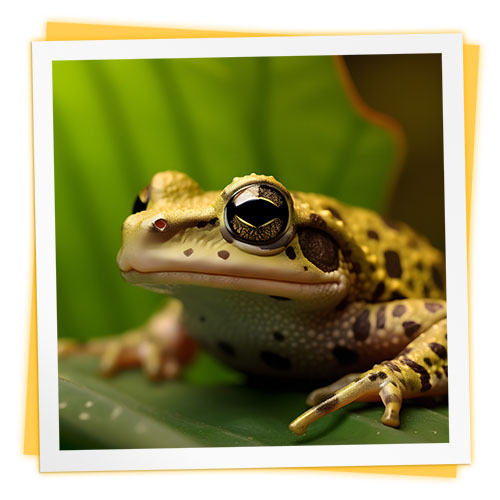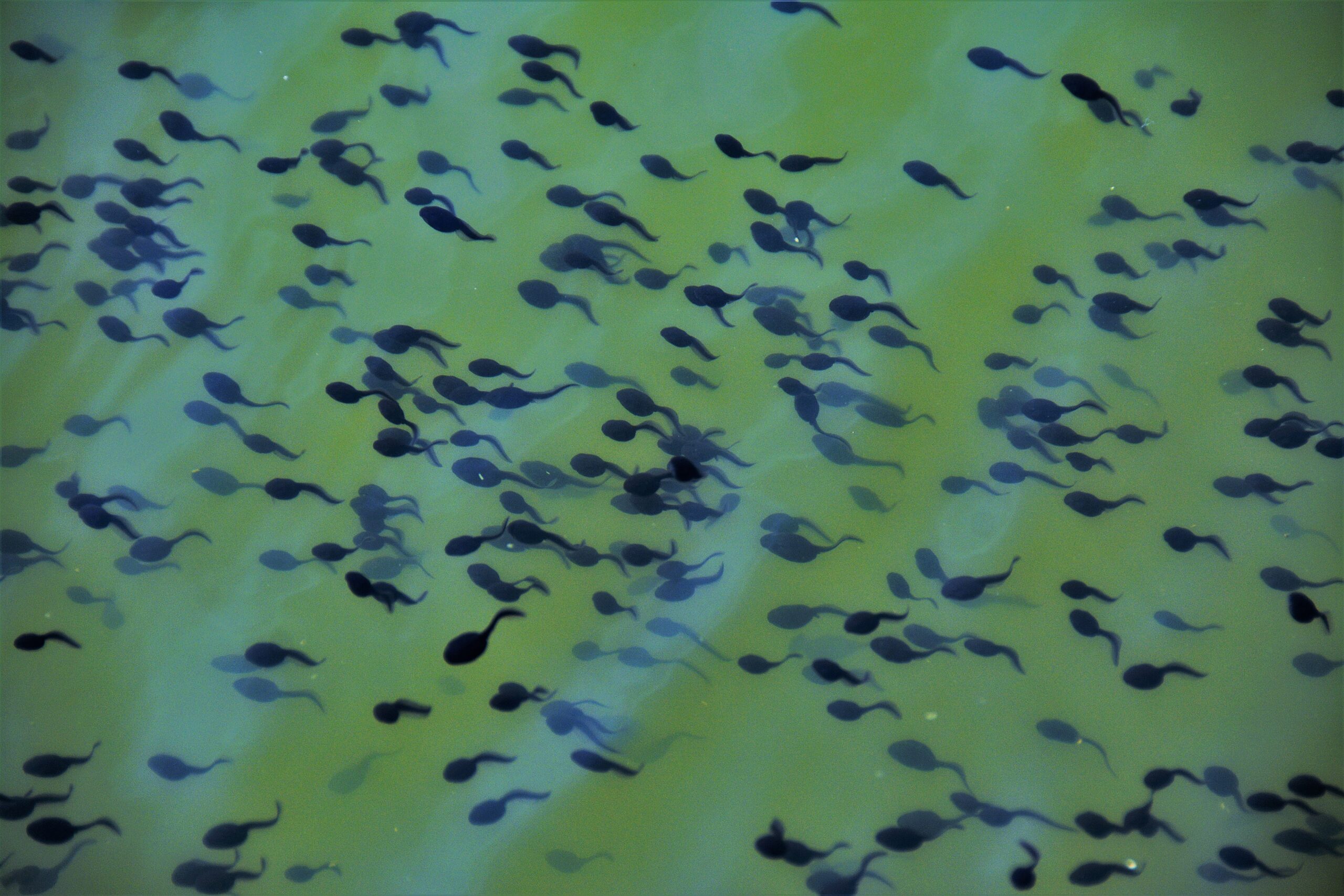This page may contain affiliate links.
Read our disclosure and privacy policy here.
Have you ever seen tadpoles swimming around in a neighborhood pond? Fascinating creatures, aren’t they? Frog and toad tadpoles are the remarkable early stages of these amphibians’ lives. They start their journey as tiny, aquatic creatures hatching from eggs in ponds, lakes, or streams. They spend their days swimming through the water, using their gills to breathe. As they grow, they undergo an incredible transformation called metamorphosis, where they grow legs, lose their tails, and develop lungs to breathe air. Tadpoles are fascinating to study, because they are involved in one of nature’s most amazing transformations.
Table of Contents
3 Cool Facts About Tadpoles
How long does it take for frog and toad tadpoles to fully develop?
The length of the tadpole phase changes depending on the frog species and environmental conditions. Generally, tadpoles spend several weeks to a few months in this stage. However, some tadpoles may undergo a longer development period, lasting up to a year or even longer in certain species. Water temperature and food availability also influences how long it takes for a tadpole to begin it’s transformation into a frog or toad.

Did You Know?
Did You Know?
Download Printables
TADPOLE FOR A YEAR
Did you know that the African Clawed Frog (Xenopus laevis) spends the most time as a tadpole? These fascinating frogs have an extended tadpole stage compared to other frog species, which can last anywhere from several months to over a year. This prolonged period as tadpoles allows them to undergo more growth and development before they eventually metamorphose into adult frogs.

What are the defense mechanisms of frog and toad tadpoles?
Tadpoles have a few defense mechanisms to protect themselves from predators.
Camouflage: Tadpoles often have colors and patterns that help them blend into their surroundings, making it harder for predators to spot them. Some tadpoles can change their coloration to match their environment, further enhancing their camouflage.
Schooling: Tadpoles of certain species form groups or schools, swimming together in a coordinated manner. This behavior can confuse predators and make it more challenging for them to target an individual tadpole.
Distraction: Tadpoles may use their tails as a defensive tool. When threatened, tadpoles can rapidly flick their tails, creating movements in the water that can startle or distract predators. This sudden movement can give the tadpole a chance to escape and find safety.
It’s important to note that tadpoles rely on their camouflage and schooling behaviors more than physical defenses like toxins or spines,. Toxins and other physical defenses are typically developed during the later stages of their lifecycle when they become adult frogs.
Tadpole ‘schooling’ refers to the coordinated movement of many tadpoles. This behavior can make it harder for predators to single out individual tadpoles to attack.
What are the differences between the tadpoles of frogs and toads?
Frog and toad tadpoles have some differences in their appearance and behavior. These are just overall general differences, and they will vary depending on the species. It’s always best to investigate each species in detail to know whether or not these generalizations apply to them.
Size and Shape: In general, frog tadpoles tend to be larger and have longer bodies compared to toad tadpoles. Frog tadpoles often have streamlined bodies, while toad tadpoles can be shorter and more robust.
Appearance: Toad tadpoles may have dark markings or patterns on their bodies, which can help with camouflage. Frog tadpoles are generally more uniform in color.
Habitat: Frog tadpoles are typically found in a wider range of aquatic habitats, such as ponds, lakes, and slow-moving streams. Toad tadpoles, on the other hand, are commonly found in smaller, shallower bodies of water like puddles, temporary pools, or marshes.
Development: Frog tadpoles generally undergo a more extended period of development compared to toad tadpoles. Frog tadpoles may take several weeks to months to fully develop, while toad tadpoles often have a shorter development period.
Behavior: Frog tadpoles are often more active swimmers, using their long tails to propel themselves through the water. They may spend more time swimming near the surface. Toad tadpoles, on the other hand, tend to be more bottom-dwelling, often resting or feeding near the substrate.

There’s a lot to explore right where we are, in our own neighborhoods and backyards! Join us while we get off the couch and explore the everyday wonders of nature, science, space, engineering, art, and anything else we stumble upon during on our adventures.




